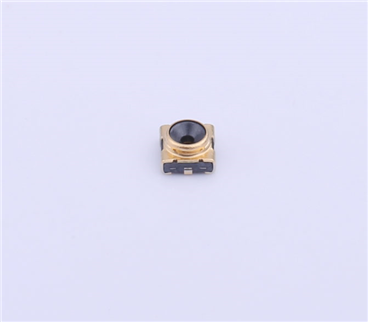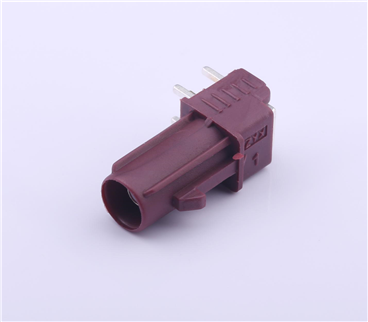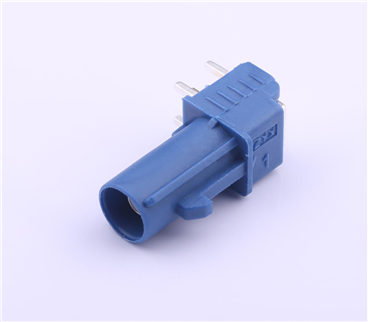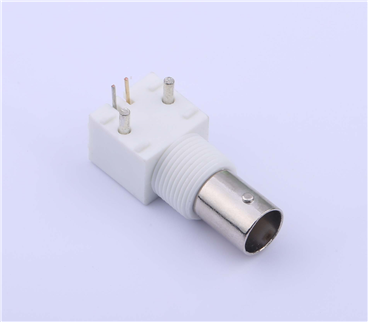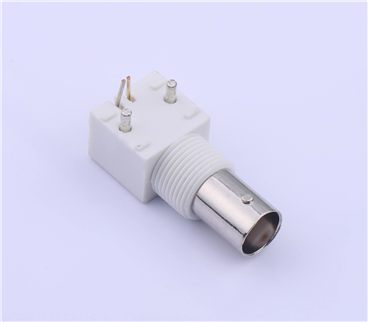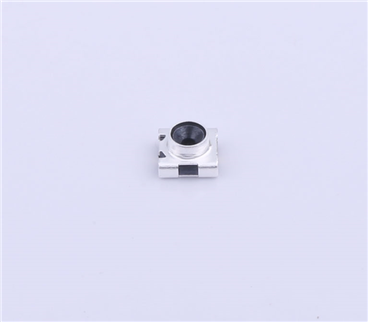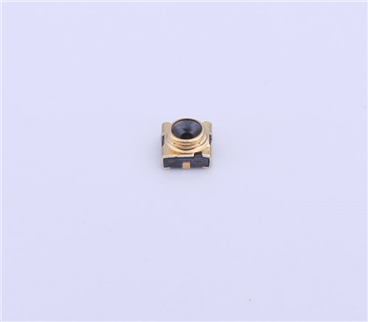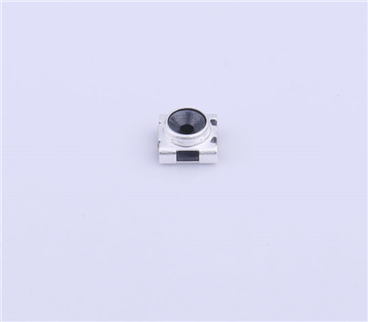Service hotline
+86 0755-23615795
Release date:2025-07-18Author source:KinghelmViews:20
RF communication antennas act as the “signal gateway” of wireless systems, widely used in mobile phones, base stations, satellites, IoT devices, and more. Compared to ordinary low-frequency antennas, RF communication antennas (operating typically between 300kHz and 300GHz) have unique differences in structural design, performance, and application scenarios due to their special frequency bands. This article will explain the key characteristics of RF antennas, helping you quickly understand their technical features and selection considerations.
I. High-Frequency Adaptability: Precise Matching to RF Signal Characteristics
One of the core features of RF communication antennas is their high adaptability to high-frequency signals, closely related to their working principles and structural design:
(1) Inverse relationship between frequency and size
The wavelength of RF signals (λ = speed of light / frequency) shortens as frequency increases, for example:
l A 300MHz RF signal has a wavelength of about 1 meter, corresponding to an antenna length of around 25 cm (λ/4).
l A 5GHz RF signal has a wavelength of about 6 cm, so the antenna length is only around 1.5 cm (λ/4).
Therefore, high-frequency RF antennas (like 24GHz) can be designed to be very compact (millimeter-level), making them suitable for integration into mobile phones, drones, and other small devices. In contrast, low-frequency RF antennas (like 433MHz) are larger and often used in outdoor long-distance equipment, such as agricultural IoT sensors.
(2) Differentiation between narrowband and wideband
Based on frequency coverage, RF antennas can be divided into:
l Narrowband antennas: Adapted to a single or limited number of frequency bands (e.g., 1.8GHz mobile antennas), designed precisely to maximize radiation efficiency in that band (≥80%).
l Wideband antennas: Cover multiple continuous frequency bands (e.g., 2.4–5.8GHz), often using multiple radiators or matching networks to serve multi-standard devices (e.g., terminals supporting both WiFi and Bluetooth). Their efficiency in any single band is slightly lower (about 60–75%).
This adaptability ensures efficient signal transmission at specific frequencies, avoiding energy loss from mismatched frequencies.
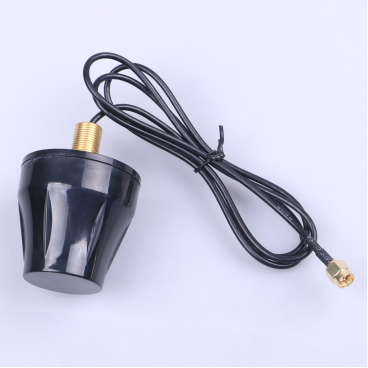
II. High Gain and Directionality: Improving RF Signal Transmission Efficiency
RF signals attenuate quickly in space (higher frequencies attenuate faster), so RF communication antennas often feature enhanced gain and directional design to offset this effect:
(1) High gain characteristics
Gain (measured in dBi) indicates an antenna’s ability to focus signal energy. RF antennas generally have higher gain than low-frequency antennas:
l Mobile phone built-in RF antennas: ~0–2dBi (limited by size)
l Outdoor base station RF antennas: up to 8–18dBi
l Satellite RF antennas (parabolic type): over 40dBi, allowing reception of very weak satellite signals (–150dBm, equivalent to trillionths of a watt)
High gain is achieved using multi-element arrays (signal stacking to increase energy) or parabolic reflectors (focusing electromagnetic waves). For example, an 8-element RF antenna array offers 6–8dBi higher gain than a single-element antenna.
(2) Strong directional control
Shorter RF wavelengths make it easier to shape radiation direction through design:
l Directional RF antennas: Use directors and reflectors to focus energy in a narrow angle (e.g., 30°–60°), suitable for point-to-point long-distance communication. Example: 28GHz directional RF antennas for 5G backhaul links, achieving up to 3 km transmission distance.
l Omnidirectional RF antennas: Distribute energy evenly in 360° horizontally, with a narrower vertical angle (±20°), ideal for multi-node coverage, like IoT gateways connecting to multiple nearby sensors.
III. Anti-Interference Design: Ensuring Purity of RF Signals
RF bands (especially 2.4GHz, 5GHz) are crowded with devices (WiFi, Bluetooth, microwave ovens), which can cause interference. RF antennas employ multiple designs to enhance anti-interference performance:
(1) Polarization isolation
By using different polarization modes to reduce co-channel interference:
l Vertical vs. horizontal polarization can reduce interfering signals by 20–30dB (signal strength drops to 1/100–1/1000).
l Circular polarization antennas (left-hand / right-hand) can isolate interference from opposite polarization, suitable for satellite communications.
(2) Narrow beam and integrated filtering
l Narrow beam design in directional RF antennas (e.g., 10° beamwidth) reduces sidelobe reception of interference.
l Some high-end RF antennas have built-in bandpass filters that only allow target frequency signals (e.g., 5.8GHz antennas filtering out 2.4GHz noise), improving signal purity.
(3) Shielding and grounding optimization
RF signals are easily affected by metals; antenna housings often use electromagnetic shielding materials (e.g., silver-plated aluminum alloy). Internal circuits also use grounding design (ground resistance ≤4Ω) to reduce electromagnetic coupling and keep the signal stable.
IV. Compact Structure: Meeting Miniaturization Needs
With the rise of IoT and wearables, small size and integration have become critical RF antenna features:
(1) Widespread use of microstrip antennas
Microstrip RF antennas use a metal patch (radiator) printed on a PCB and a ground plane below, with thickness as low as 0.1–1mm. They can be directly integrated into mainboards, used widely in phones, smartwatches, etc. For example, a Bluetooth RF antenna (2.4GHz) in a fitness band might be just 5×3mm and weigh less than 0.1g.
(2) Flexible and custom shapes
Some RF antennas use flexible substrates (e.g., polyimide) and can bend to fit curves on devices (e.g., car mirrors, drone bodies), saving space and preserving design aesthetics. For instance, automotive millimeter-wave radar (77GHz) antennas can be built into bumpers, only 2mm thick.
V. Environmental Adaptability: Handling Complex Environments
RF antennas are often used outdoors or in harsh conditions, so durability and stability are critical:
(1) Environmental resistance
l Temperature tolerance: Industrial-grade RF antennas work from –40°C to +85°C, using temperature-resistant plastics and metals for extreme environments like deserts or polar regions.
l Corrosion and waterproofing: Outdoor base station RF antennas use fiberglass housings and stainless-steel brackets, designed to IP67 (waterproof under 1m for 30 minutes), resisting rain and salt fog; lifespan near coasts can reach 8–10 years.
(2) Mechanical stability
l Car-mounted RF antennas (e.g., GPS navigation) use anti-shock designs to withstand 100G acceleration shocks (like during a car crash).
l Satellite RF antennas use precision bearings to resist hurricane-force winds (up to level 12, wind speed ~32.7m/s) while staying pointed accurately.
VI. Comparison of Different RF Antenna Types
|
Antenna Type |
Key Features |
Typical Frequencies |
Application Scenarios |
|
Microstrip RF antenna |
Very small (millimeter level), high integration, medium gain (2–5dBi) |
2.4GHz, 5GHz |
Mobile phones, routers, drones |
|
Parabolic RF antenna |
High gain (15–40dBi), strong directivity, larger size |
10GHz–300GHz |
Satellite communication, long-distance microwave links |
|
Whip RF antenna |
Omnidirectional coverage, easy to install, low gain (1–3dBi) |
433MHz, 915MHz |
IoT sensors, walkie-talkies |
|
Array RF antenna |
Multi-beam steering, high gain (8–20dBi), supports beamforming |
3.5GHz, 28GHz |
5G base stations, radar systems |
VII. Summary
In summary, RF communication antennas stand out through high-frequency adaptability, efficient signal transmission (high gain + strong directionality), anti-interference capabilities, compact structure, and environmental durability. These features allow them to match RF transmission needs accurately, playing an irreplaceable role in mobile communications, IoT, satellite systems, and beyond. When selecting an RF antenna, consider factors like frequency range (e.g., 2.4GHz vs. 5G mmWave), coverage type (omnidirectional vs. directional), and environment (outdoor vs. indoor) to choose the best fit.

